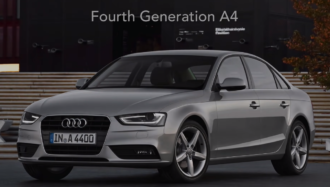Racing with Nitro-Powered RC Cars: Choosing the Right Variety for Your Needs
Introduction
Racing with nitro-powered RC cars is an exciting hobby that offers thrill-seekers the chance to experience the high-octane rush of speed and precision. These miniature vehicles come in various sizes, styles, and performance levels, making it essential to choose the right one for your needs.
Here are some key aspects to consider when selecting an RC nitro car for racing.
Nitro-Powered RC Cars: An Overview
These come in various sizes, from small 1/18 scale models to larger 1/8 scale vehicles. These miniature vehicles are powered by small engines that burn a mixture of nitromethane, methanol, and oil. These engines can be tuned for performance, allowing racers to fine-tune their vehicle’s acceleration, top speed, and handling. They can also be purchased as kits or ready-to-run (RTR) models ready to go right out of the box.
Consider Your Skill Level
When selecting a car for racing, it’s important to consider your skill level. If you’re just starting, choose a vehicle that is easier to handle and has a more forgiving engine. Some models are designed with beginner drivers in mind and can be an excellent choice for those new to the hobby. Conversely, if you’re an experienced racer and want to push the limits of performance, choose a more advanced model that requires more skill.
Size Matters
The size of your RC nitro car can significantly impact its performance. Smaller vehicles are generally more agile and easier to handle, making them a good choice for tighter courses or indoor racing. However, larger ones have more power and can reach higher speeds, making them better for larger tracks or outdoor racing. It’s important to consider where you’ll be racing your vehicle and your personal preferences when choosing a size. IF you plan to compete, there may also be size requirements to consider.
Consider the Suspension
The suspension of your nitro RC car is an important factor when selecting a racing model. A sound suspension system can help your vehicle handle rough terrain and uneven surfaces, while a poor suspension can make it challenging to maintain control. Some models come with adjustable suspension systems that can be fine-tuned for different racing conditions. In contrast, others have a fixed suspension designed for a specific type of racing.
Engine Performance
Your car’s nitro engine is the heart of the vehicle and plays a big role in its performance. Engines can be tuned for different types of racing, with some models designed for maximum speed and acceleration while others are optimized for handling and control. If you’re an experienced racer, choose a model with a high-performance engine that can be fine-tuned for maximum speed and power. And, if you’re new to the hobby, select a model with a more forgiving nitro engine that is easier to handle.
Kit or RTR
When selecting an RC car for racing, you’ll need to purchase a kit or a ready-to-run (RTR) model. Kits require assembly and tuning, which can be a great way to learn about the inner workings of your vehicle and fine-tune it for maximum performance. However, an RTR model may be a better choice if you’re new to the hobby, as it comes ready to go right out of the box.
Conclusion
Selecting the right nitro RC car for racing involves considering various factors, including skill level, size, suspension, engine performance, and whether to purchase a kit or an RTR model. By carefully weighing these factors and researching the different brands and models available, you can find a vehicle that meets your needs and provides the high-octane thrills and excitement that make nitro-powered RC car racing a popular hobby. With the right vehicle and a commitment to learning and practicing, you can master the art of nitro-powered RC car racing and experience the joy of pushing your vehicle to its limits on the track.

















